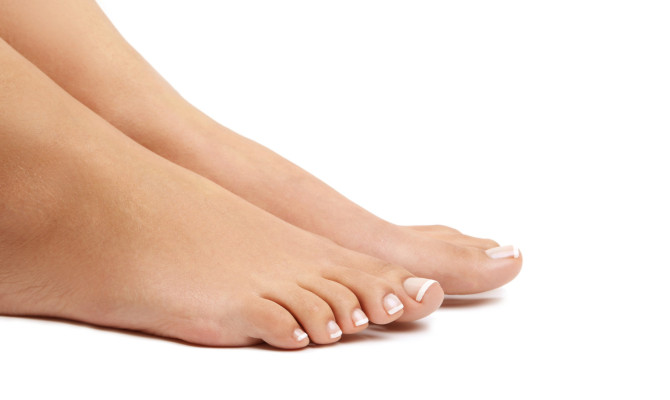Rash Signs Of Carpet Beetles & Its Management

- Bug Bites
- 19 Sep 2023
Introduction
Carpet Beetle – A frequent pest
The black carpet beetle is a highly frequent pest found across numerous homes and requires pest treatment, despite the fact that there are many other insects that might attack our house, such as clothing moths, pantry beetles, ants, and termites. They are an inconvenience since the larvae will devour almost anything in your house, ruining property and triggering allergies. In this article, we will discuss how to spot adult carpet beetles, how to get rid of an infestation, and what to do if you develop an allergy.4 Introduction| Researched based study from Pests.org

Carpet Beetles
What are Carpet Beetles?
- The carpet beetle, or Anthrenus sp is a member of the Coleoptera order and family Dermestidae. They measure around 3 to 4 mm long, and eat nectar and pollen.
- Autumn is the time of year when female beetles look for warm places to deposit their eggs, which makes furniture one of their preferred locations.
- The 4 mm-long larvae hatch toward the end of winter or in the early spring. Typically, they reside in shadowy cabinets and drawers.
- Larvae are typically discovered in closets, on stuffed animals, beds, or beneath carpets because they feed on dry organic matter including plant or animal wastes, such as wool, pollen, dead skin cells, the feathers, and hairs.
- Many types of carpet beetle larvae are coated in hairs with spear-like tips. A natural breeze or an air conditioning system will spread these hairs throughout the house.3 Carpet Beetles| Researched based study from National Library of Medicine
Identification
How to identify Carpet Beetle Rash?
- The most typical fabric pest in West Virginia is the carpet beetle. It is recognized that a number of species are pests in houses.
- Attagenus megatoma, a black carpet beetle, is one of the most prevalent. The oval-shaped, 3/16-inch-long black carpet beetle has brown legs and is completely covered in black.
- When fully developed, black carpet beetle larvae measure half an inch. They can be either brown or yellow in appearance, and have a brown “ponytail” sticking out of the end of their bodies.1 Identification | Researched based study from West Virginia University
- Even though they do not sting, bite, transmit illness, or consume wood, the carpet beetles can nevertheless be very destructive if not controlled.
- The larval stage of carpet beetles, like many other pests of stored goods, is the one that causes harm.
- Adults consume outside plant pollen rather than textile fibers as a source of food. Typically, adults first appear in May and June. They fly into windows and doors, squeeze through crevices, or ride flowers or clothing into homes.
- Due to their tendency to be discreet, carpet beetle larvae are typically not discovered in homes until they are adults. 1 Identification | Researched based study from West Virginia University
Symptoms
Symptoms of Carpet Beetle Rash
Carpet beetles often wreak havoc on homes while they are in the larval stage, but some people may develop allergies to them. The signs of a carpet beetle allergy might vary, but typically include
- Itching
- Rashes
- Redness
- Allergic reactions – Eye and respiratory discomfort
Itching
- The itch, which can be intense and challenging to get rid of, is comparable to that of a mosquito bite.
- The hands and legs may get itchy as well as other body regions.
Rashes
- Rashes may develop, and because they can be quite itchy and uncomfortable, they may interfere with everyday activities and disrupt sleep.
Allergic reactions
- Several studies indicate what seems to be an acquired allergy to hemolymph (insect blood) and larval hairs of the carpet beetle.
- People who have these hypersensitive responses typically complain of being bitten by something, which results in severe itching and a rash.
- Additionally, some individuals may have ocular and respiratory discomfort.
- It appears that sensitization only occurs in those who have had years’ worth of exposure to these hairs. 4 Symptoms | Researched based study from Pests.org 2 Symptoms| Researched based study from PENNSTATE College of Agricultural Sciences
Allergy Test
Allergy test for Carpet Beetle
- The test is often carried out by a medical practitioner, however there are other at-home solutions available.
- Small amounts of carpet beetle allergens are administered to the skin using a tiny needle or through a patch test throughout a carpet beetle allergy test.
- After that, the region is checked for any reactions, such as swelling, itching, or redness.
- The entire procedure takes only a little while, is painless, and the findings might provide important information about the allergy status.
- Your understanding of whether your allergy symptoms are actually brought on by exposure to carpet beetles will be aided by the test’s findings.
Prevention

How to prevent Carpet Beetle Rash?
- The most effective way to avoid carpet beetles is proper housekeeping, even if their presence is not always a symptom of sloppy cleaning.
- Avoid letting lint, dust, and hair collect in cracks, crevices, or other tucked-away areas.
- Vacuum often, particularly in the areas beneath and behind household items, in storage spaces, drapes, baseboards, and moldings, as well as within drawers.
- “Traffic pattern vacuuming” is only marginally effective in reducing carpet beetle infestations. Other housekeeping chores involve removing any wasp or nests of birds you find connected to your home and clearing dead insects out of the lighting.1 Prevention | Researched based study from West Virginia University
- Another crucial preventative strategy is maintaining clean materials. Wool sweaters and coats should be washed or dry-cleaned in the spring before being put in storage rather than in the fall whenever you are ready to use them.
- Like most insects, carpet beetles are more active during warm weather. Storing dirty woolens will increase the beatles’ attraction to the textiles, giving them the entire summer to feast on your clothing.
- Dry-clean or wash garments before putting them away, then place them in plastic zipper bags. By placing under the sun, wool garments and carpets may breathe.
- It is frequently better to have pricey furs stored in a chilly environment by a reputable dry cleaner.
- Beetles may be kept out of your house by closing windows and doors. You may buy screens for windows and doors if opening your windows on warm days is important.
- To get rid of hair and skin cells, vacuum often and think about steam cleaning textiles, rugs, carpets, and upholstery.
- Make any necessary repairs if you spot any potential entrance points for beetle larvae.
- Check your house for cracks which beetles may utilize to enter. Carpet beetles can consume most materials; however, they exclusively consume organic ones.1 Prevention | Researched based study from West Virginia University
Management
Natural remedy for Carpet Beetle
After doing your investigation and discovering that your home is plagued with these bugs, the next step is to get rid of the pests. You will be on the way to becoming bug-free if you follow these instructions. Occasionally, if these measures are unsuccessful in getting rid of an infestation that is exceptionally hard, you may need to hire a specialist.
Carpet Vacuums:
- Vacuuming all of your home’s surfaces is the first step in ridding it of carpet beetles. In addition to vacuuming the carpet in each room, you should also clean the drapes and furniture.
- Though you should not overlook other regions, you must focus on the areas that you first observed the infestation.
- Make sure that all surfaces have been treated. Whether the beetles are in the egg or larval stage, you may completely eradicate them by vacuuming.
- Vacuuming frequently throughout the day is ideal for this remedy to be successful.
- By doing this, you should be able to get rid of any larvae that could reappear from dark, hidden spots inside your house.
- Use the parts that attach to the vacuum to reach every crevice while doing this treatment. Take the cushions off your couch and give the sides and base a thorough vacuuming.4 Management| Researched based study from Pests.org
Wash Fabrics:
- It is okay if you have clothing and bedding which has been sealed within airtight containers. All other materials, including your towels, clothing, and bedding, must be cleaned.
- Employing a steam cleaner to handle rugs, furniture, and carpets is an option, as is employing a professional to steam clean your house for you.
- These two measures should be sufficient to eradicate any beetle traces from your house, but if, after a week or so, you still notice a lingering infestation, you will have to take further actions to permanently resolve the issue. 4 Management| Researched based study from Pests.org
Boric Acid:
- Boric acid is the most often used and advised method of treating carpet beetles.
- It is a chemical that is easily accessible online and is completely safe for people. Spread the powder all about the house, wait a while, and then vacuum it up.
- Consider the surfaces and textiles to apply the Boric acid on, and do not leave it on carpets for longer than two hours.
- As bleach, boric acid has the potential to lighten dark materials. If you are worried that bleaching with boric acid could harm dark materials, you may apply an insecticide instead.
Use Insecticide:
- Make sure the pesticide you use for treating carpet beetles is effective by reviewing the product label.
- The pesticide can be used on carpet, upholstered furniture, crevices and holes around baseboards, moldings, closets, and drawers but not on clothing directly.
- When using the spray, take the clothing out of the drawers; do not put it back in until the application has dried.
- While doing the treatment, open windows, put on gloves and safety goggles if required, and keep people and pets including birds and fish away from the house.4 Management| Researched based study from Pests.org
- After applying the insecticide, clean clothing should be stored in plastic bags with tight closures.1 Management | Researched based study from West Virginia University
Treatment
Treatment for Carpet Beetle Rash
Depending on the person, different carpet beetle allergies require different treatments.
- The severe and excruciating itching that comes with this type of allergies is the major issue. You may apply a swab sting to treat this adverse effect, which is the most frequent. These swabs will relieve the itching and promote healing.
- Calamine lotion, which is readily accessible in pharmacies and supermarkets, is a straightforward and classic treatment for pain surrounding the afflicted region. It will relax and soothe the area.
- You can also use creams or lotions containing Benadryl or cortisone. Once more, these treatments will ease irritation while encouraging recovery.
- Making a cold compress with ice or frozen vegetable packs from your freezer is another option. Apply to the painful, itchy region while they are wrapped in a fresh towel. This all-natural technique numbs the region and relieves the agonizing itch.
- You should consult a dermatologist if the situation is more serious or if these remedies do not work. In some circumstances, a dermatologist may advise steroid injections or propose stronger creams.
- Pets should be taken into account as well. Carpet beetles adore eating hair and fur, and they are especially drawn to dogs, though they may also consume cat hair.4 Tretment| Researched based study from Pests.org
FAQs
Carpet Beetle-Frequently Asked Questions
How long does carpet beetle rash last?
- Carpet beetle may trigger a response that results in an itching rash when they come into contact with skin.
- The rash can be minor to severe and might linger for a couple of days to a few weeks.
Is everyone allergic to carpet beetles?
- A beetle that is an adult has no motivation to attack humans or animals.
- Long-term exposure to the insect larvae, however, has been linked to allergic responses, including itchy red eyes, nasal congestion, burning hives that may mimic bed bug bites, and skin irritation.
Can carpet mites live on humans?
- While most mites do not come into contact with people, a few do and may have negative effects on a person’s health.
- However, there is frequently no evidence of a causal organism in circumstances when mites or other “invisible” arthropods are thought of biting or “attacking” people.5 FAQs| Researched based study from Illinois Department of Public Health
Takeaway
Carpet Beetle -Things to keep in mind
- The simplest strategy to stop an infestation from spreading is to keep the house clean, which will eliminate any potential food sources for starving beetle larvae. 4 Takeaway| Researched based study from Pests.org
- An important first step in managing insect infestations is accurate specimen detection and identification.
- Members in the same household may experience allergic cutaneous responses (not bites) brought on by hairs caught in the skin, resulting in sores that can be seen beneath clothing.
- When skin lesions resembling arthropod bites do not have a core blister, the surroundings should be checked for this carpet beetle.
- Different members of the same family respond differently to larval hairs, and more than one of these members of the family can typically show no symptoms. 3 Takeaway| Researched based study from National Library of Medicine
Any feedback on this article?
 This Articles content was accurate
This Articles content was accurate Very Informative Article
Very Informative Article I have a question or a comment
I have a question or a comment
 This article contains inaccurate content
This article contains inaccurate content This article was not helpful
This article was not helpful I have a question or a comment
I have a question or a comment
We appreciate your helpful feedback!
Checkout our social pages
References
-
West Virginia University
Identification | Prevention | Management
-
PENNSTATE College of Agricultural Sciences
Symptoms
-
National Library of Medicine
Carpet Beetle | Takeaway
-
Pests.org
Introduction | Symptoms | Management | Treatment | Takeaway
-
Illinois Department of Public Health
FAQs



































